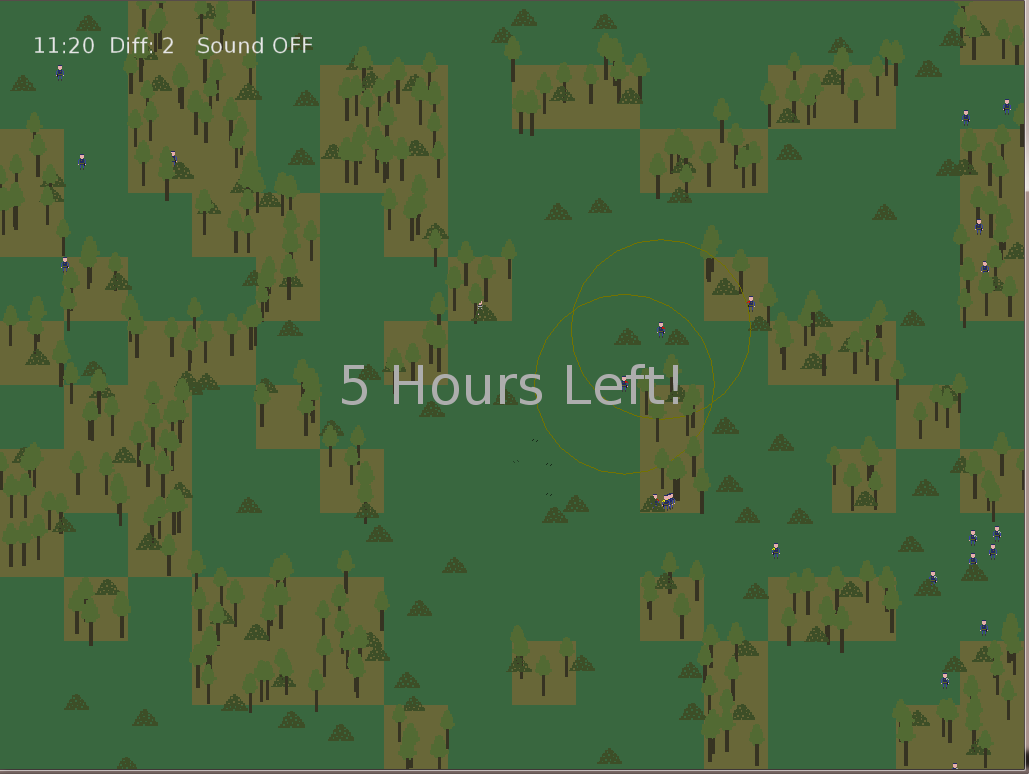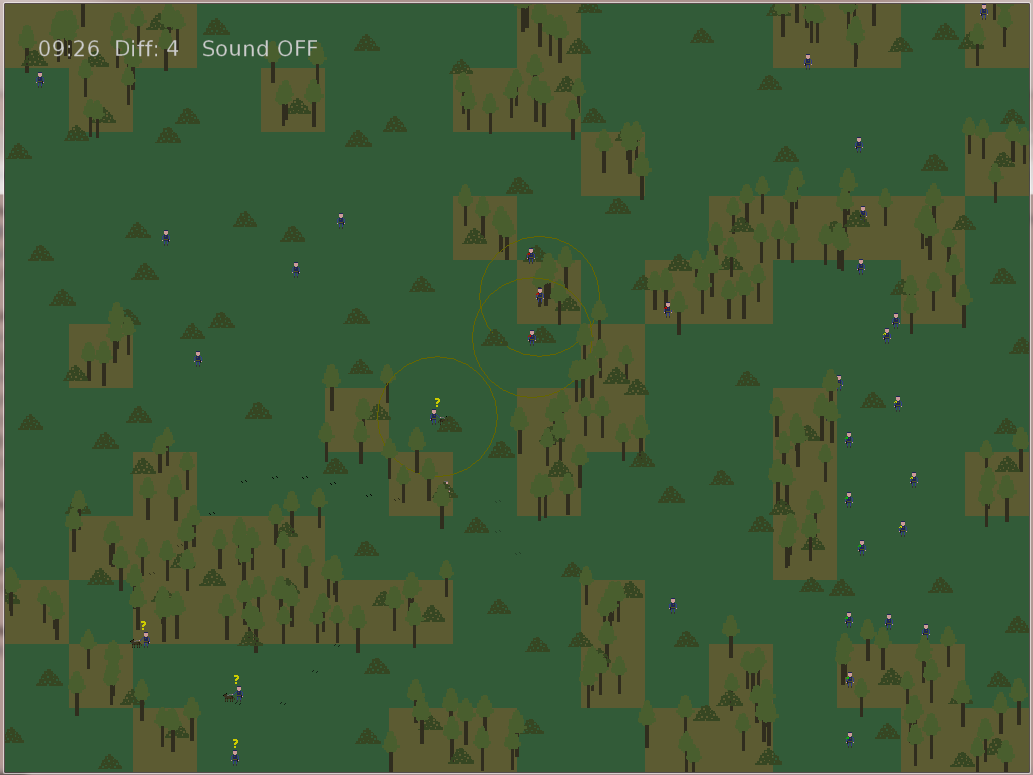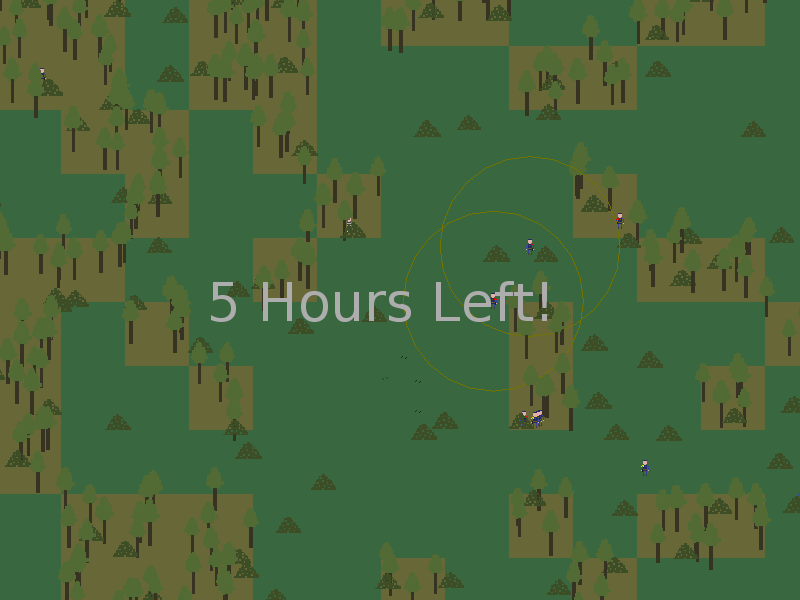If enemies see the player, they will give chase and run towards them - if the player leaves their sight (using their sprint ability to outpace the pursuer and/or hiding) then they will keep moving in the same direction for some time, before resuming random searching. If they see footprints, they will follow them, but players can hide their footprints by sneaking, at the cost of moving more slowly. Difficulties three and four (of four) introduce dog handlers, who follow your scent - this is pretty much the same in game terms as footprints, except the player can't see their scent markers, and they can't prevent them spawning like footprints. The code I wrote for this tracking basically involved each set of footprints linking itself to the previously spawned set, and enemies use this to get a direction when they reach each set of footprints. When the player moves back and forth across their footprints, there is an age value so in theory they follow the latest one, but to be honest it's a somewhat buggy system... which I think is actually okay in this case.
Of course I would have debugged it properly if I could, but given the limited time it works well enough most of the time, and when it does break, I would put it down to human error on the part of the guards. It adds a bit more randomness to the game, and I'd like to think it also gives a bit more human weakness to the guards, rather than them being relentless tracking cyborgs. Even the dogs can get confused, though it was easier to ensure a solid scent trail because people can't see their scent, and the spawning frequency doesn't need to change based on player movement speed. Players expect to see the same number of footprints in a given distance regardless of their speed, but more footprints generally makes the AI guards more likely to make mistakes, so not requiring this for the scent makes it work better (which also fits nicely with the idea of the dog handlers being mostly impossible to shake off).
The less said about the art, probably the better? I'd like to think it has a certain charm to it, but yeah, really it's an ugly game. I'm not too bothered about that - there wasn't a lot of time and I'm no artist, so it was never gonna win awards for art. Most people seemed to find it acceptable though, and I think it's clear at least. Your character doesn't stand out, but that's kind of the point of the game. For sounds I used SFXR to make a footstep sound and a kind of impact sound to play repeatedly when you're caught. To add a bit of mood I found a wind loop online and included that, which I think worked surprisingly well. Most of the time with my games I don't really bother with sounds - I listen to music while making stuff, and don't do many faster paced games where sound cues might be necessary. This is laziness of course, since nearly any game is better with at least a few sounds, but there you go.
All the game options, and restarting the game or changing difficulty, are done by button presses in order to fit with the 'Entire Game on One Screen' theme. This is also why the basic difficulty the game starts in has explanation text appear on screen, and a substantial delay before any enemies appear so players have time to read. It's not particularly elegant, and doesn't do anything clever with the theme, which is a shame - but I'll admit I didn't find the theme particularly engaging. Especially for a time limited game dev event, it doesn't seem like a great choice - a lot of LD games are likely to be only one screen anyway, so I think something to do with setting or actual gameplay would have been more interesting. It's also very rigid, without that much room for interpretation. I don't remember playing many games that did anything really clever with the concept, and quite a few basically ignored it entirely, which I don't really blame them for. Hopefully people will vote for something more interesting for the next one!
To improve it I think a larger play area would be necessary, if only to really make space for extra gameplay features. For instance, more terrain types or new enemies would make things extremely cluttered if I tried to add them into the same space. The limited space currently also tends to strongly encourage a sneaking evasion style without too much movement, which I feel would reduce the impact of any new terrain. In contrast, having the option to run through different zones, stopping to hide from faster enemies passing by (jeeps, helicopters?) before picking up the pace again, while trying to find streams or hard ground to leave less clear tracks, could make the game deeper without needing loads of new mechanics.




 RSS Feed
RSS Feed